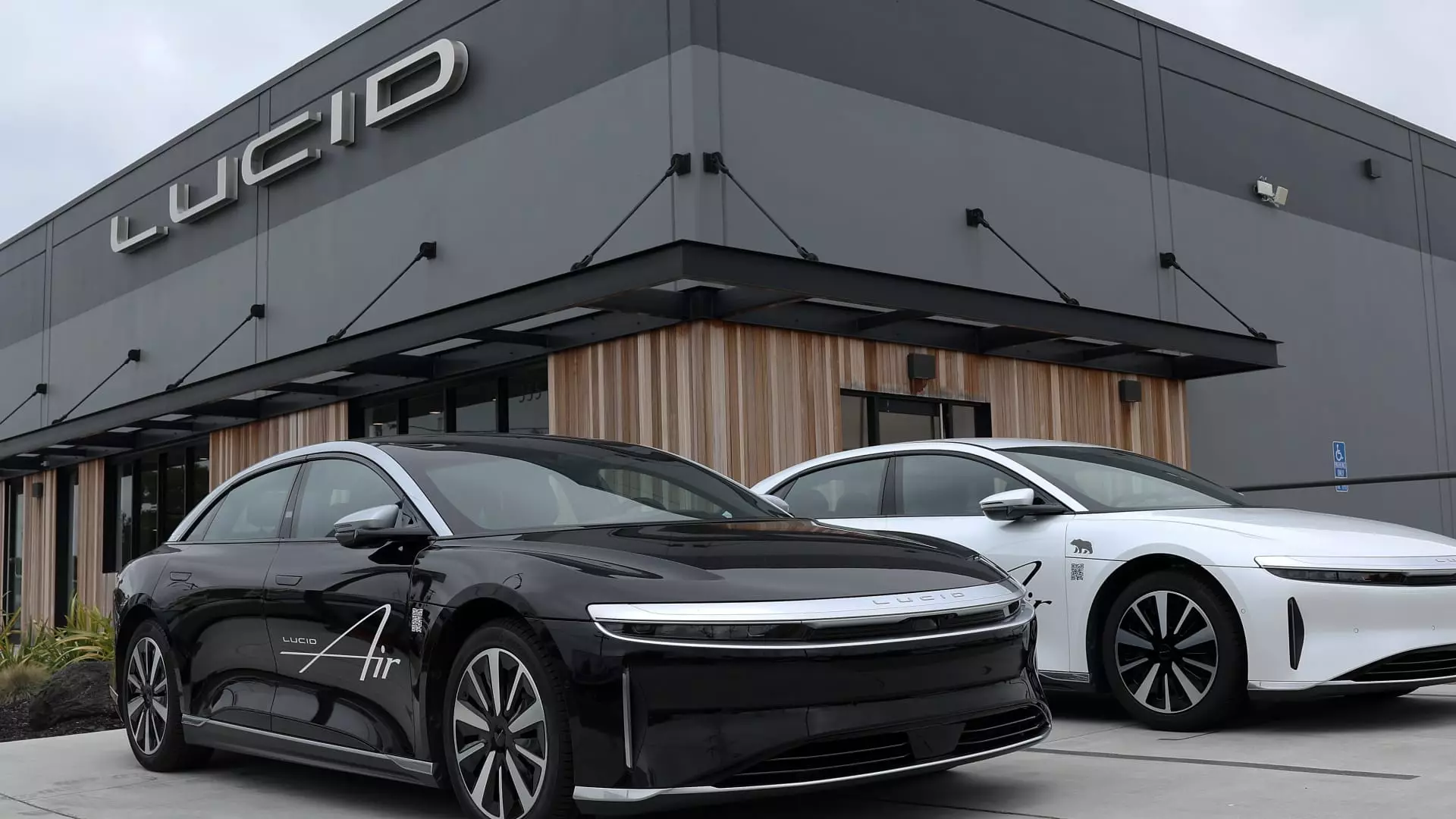In a financial landscape marked by uncertainty, Lucid Group has released its third-quarter results which indicate a slight surpassing of Wall Street expectations. The electric vehicle manufacturer, known for its high-performance luxury sedans, has reported a narrower loss per share than analysts anticipated. Specifically, Lucid posted an adjusted loss of 28 cents per share, compared to the expected loss of 30 cents. Additionally, the company’s revenue reached $200 million, slightly above the forecast of $198 million. These achievements have been met with a positive response from investors, pushing the stock price up by over 8% in after-hours trading, following a modest increase of 4.2% in regular trading.
Despite the positive revenue figures, it is crucial to address the broader context of Lucid’s financial health. The company recorded a significant net loss of $992.5 million for the quarter, a stark increase from the loss of $630.9 million experienced during the same period last year. This widening loss raises questions about the sustainability of Lucid’s business model and its ability to navigate the competitive landscape of electric vehicles.
Lucid’s CEO, Peter Rawlinson, hailed the quarter as a “landmark” moment for the company, pointing to record deliveries of 2,781 units and the implementation of cost-cutting measures as highlights of their performance. However, the increasing costs associated with research and development and administrative expenses, which surged by 40.1% and 23.1% respectively, necessitate a closer examination of Lucid’s operational efficiency.
Looking forward, Lucid has reaffirmed its commitment to producing approximately 9,000 vehicles in 2023, marking a modest 6.8% increase from the previous year. The optimistic production outlook, however, should be tempered with caution given the backdrop of financial struggles and potential supply chain issues inherent in the automotive industry.
The company’s liquidity position appears more stable, with $5.16 billion in available funds at the close of the third quarter. This liquidity has been bolstered by a recent stock offering of $1.75 billion that raised eyebrows among investors due to the scale and timing. Rawlinson described this capital raise as essential, asserting that it would help secure Lucid’s operational capabilities into 2026, allowing the company to pursue the launch of new products, including its upcoming Gravity SUV.
While the signs of optimism are evident, they are overshadowed by mounting challenges. Lucid’s stock has faced significant pressure throughout the year, falling by approximately 45%. This includes a notable 18% drop following the announcement of the recent capital raise, marking its most substantial daily loss since December 2021. Such fluctuations not only reflect investor sentiment but also underline the ongoing concerns surrounding extensive cash burn and insufficient sales traction.
As Lucid ventures further into its capital-intensive phase, which includes expanding its manufacturing footprint in Arizona and building a second factory in Saudi Arabia, prudent financial management will be paramount. The automotive industry is notoriously difficult to navigate, especially for companies attempting to carve a niche in the already competitive electric vehicle market. Interim CFO Gagan Dhingra emphasized comprehensive cost-saving measures, stating that “We are not leaving any corner. It’s across the board,” highlighting a proactive approach to fostering financial stability.
Lucid Group has demonstrated a mixed bag of results in its recent quarterly performance. While the slight beat of Wall Street expectations indicates some level of operational strength, challenges loom large. The company must address its widening losses and navigate a competitive landscape with vigilance. As it gears up for the launch of the Gravity SUV and broader production goals, Lucid’s ability to effectively manage costs and deliver on its promises will ultimately determine its trajectory in an evolving electric vehicle industry. Investors will be watching closely as the company attempts to stabilize its foundation and capitalize on future growth opportunities.


Leave a Reply